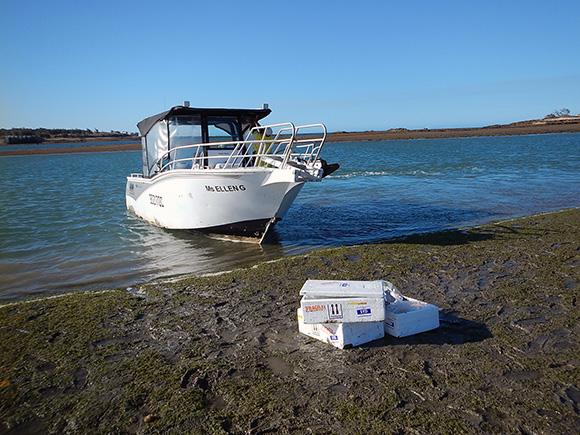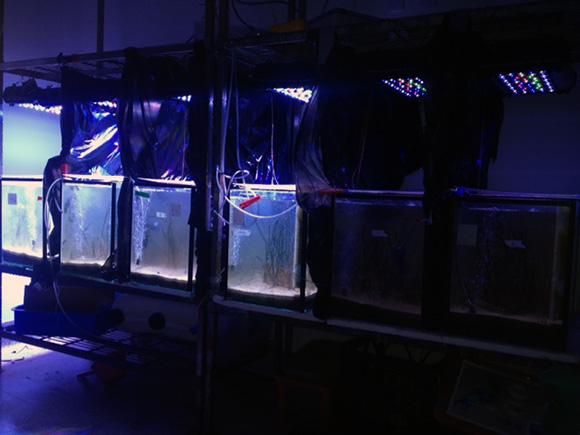
Collection of Zostera muelleri samples in Gladstone Harbour to validate seagrass health molecular toolkit for monitoring dredging-related light stress.
Project members: M. Schliep, M. Pernice, S. Sinutok, C. V. Bryant, P. H. York, M. A. Rasheed & P. J. Ralph
Funding or partner organisation: Gladstone Ports Corporation Ltd (Gladstone Ports Authority)
In a collaborative research program with James Cook University (JCU), UTS was supported by Gladstone Ports Corporation to develop the use of cutting-edge technology, real-time quantitative polymerase chain reaction (RT-qPCR), to deliver a fast and reliable seagrass health monitoring system for Zostera muelleri ssp. capricorni based on seagrass-specific molecular biomarkers.
In a paper just published in the journal Scientific Reports (opens an external site), UTS and JCU researchers show how seagrass health can be monitored using gene expression, to give results long before any physiological or morphological changes occur in these plants.

Laboratory-based procedures developed by researchers of the UTS team to analyse seagrass health molecular toolkit using RT-qPCR.
Using RT-qPCR, the authors estimated the expression levels of target genes on the basis of reference genes, in order to control for RNA variations. Although determination of suitable reference genes is critical for RT-qPCR studies, reports on the evaluation of reference genes were absent so far for the major Australian species Zostera muelleri subsp. capricorni (Z. muelleri). UTS and JCU researchers used three different software to evaluate ten widely used reference genes according to their expression stability in Z. muelleri exposed to light limitation. The four best reference genes were then used to successfully detect changes in target gene expression levels just 2 weeks after the onset of light limitation; whereas symptoms of plant mortality, such as decrease in biomass, become apparent only after two months.
Based on the findings of this work, UTS and JCU researchers have developed a protocol for this molecular tool kit to assist in the management of dredging where the light may be insufficient to support Z. muelleri meadows. This innovative methodology has great potential for the management of dredging impacts to seagrass, allowing a reliable and rapid assessment of whether seagrasses are under low light stress prior to any actual declines taking place. Furthermore, the pipeline and techniques developed can now be readily applied for other seagrass species which dominate other the coastal habitats around Australia.

Aquarium set-up used for laboratory-based experiment at UTS to validate seagrass health molecular toolkit for light attenuation.
The final report (opens an external site) is the culmination of a two-year research effort from UTS & JCU and investment by GPC.

